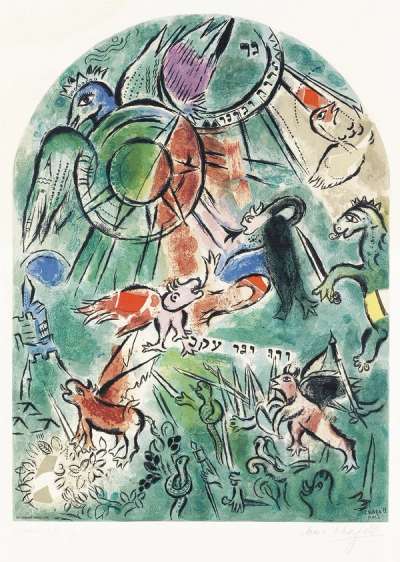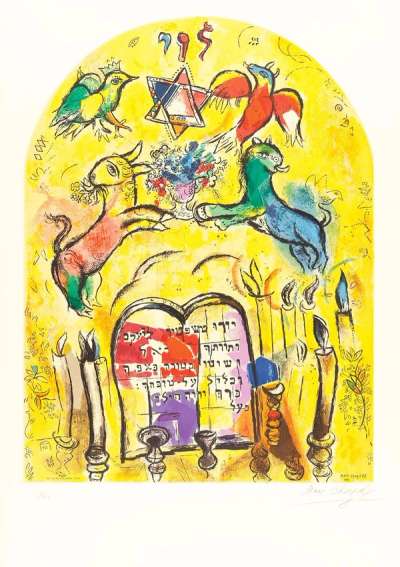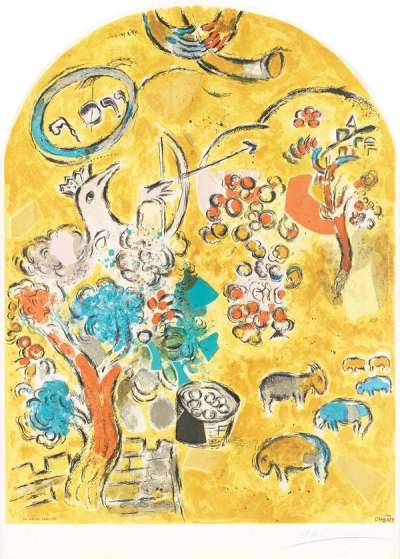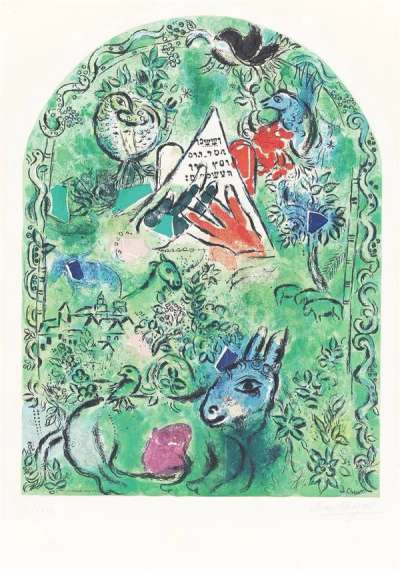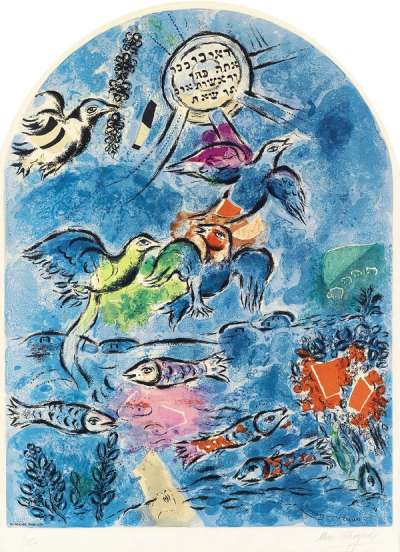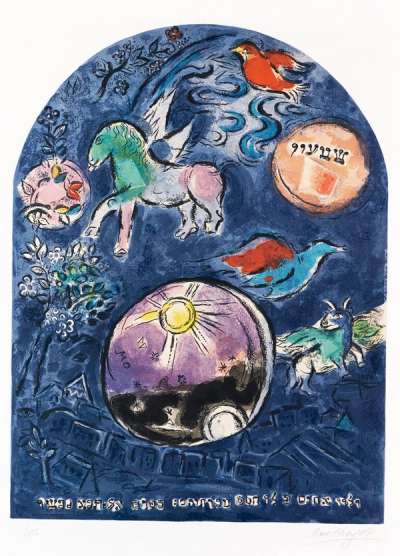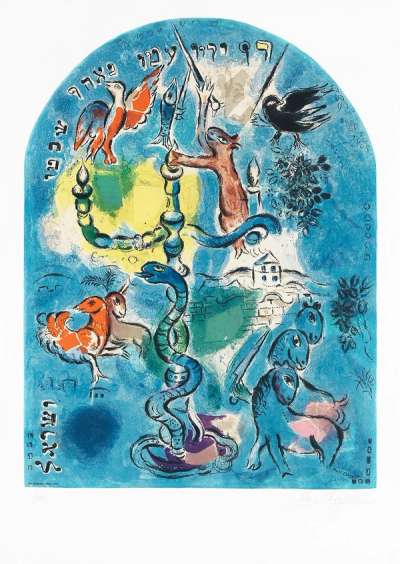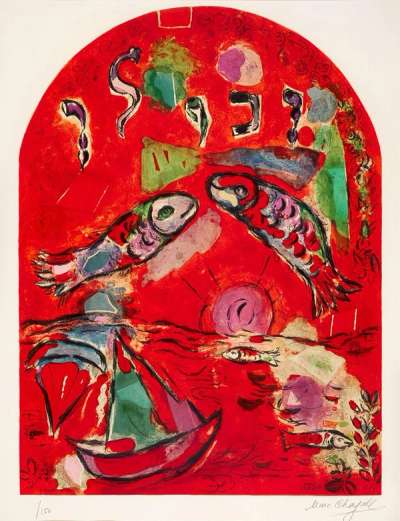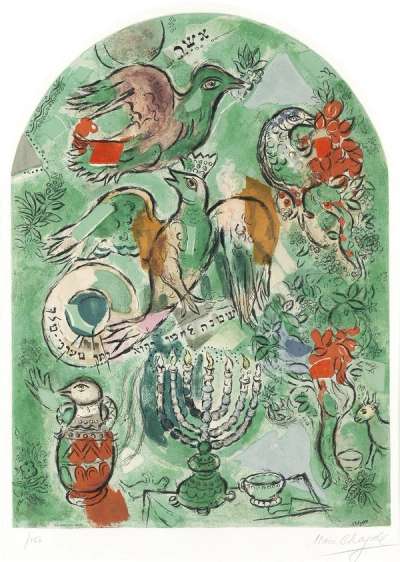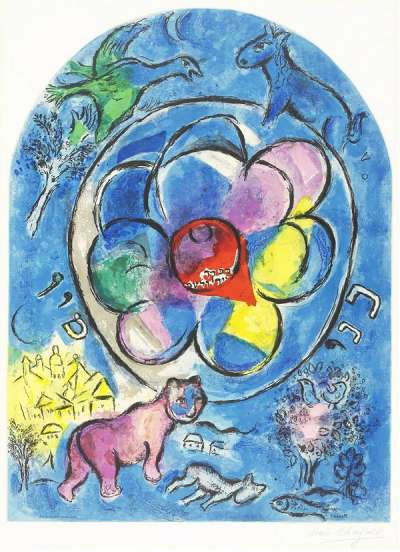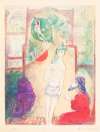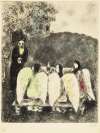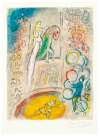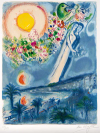Douze
Maquettes De Vitraux Pour Jérusalem (Twelve Maquettes Of Stained Glass Windows For Jerusalem)
Marc Chagall’s Douze Maquettes De Vitraux Pour Jérusalem is a transformative series of lithographs created in 1964, based on his original stained glass works for the Hadassah-Hebrew University Medical Center in Jerusalem. This profound series illustrates the blessings Jacob bestowed upon his twelve sons, symbolically representing the tribes of Israel. Chagall integrates iconic imagery with vibrant colours, encapsulating the diversity and spiritual essence of the biblical narratives.
Marc Chagall Douze Maquettes De Vitraux Pour Jérusalem (Twelve Maquettes Of Stained Glass Windows For Jerusalem) For sale
Douze Maquettes De Vitraux Pour Jérusalem (Twelve Maquettes Of Stained Glass Windows For Jerusalem) Value (5 Years)
With £11792 in the past 12 months, Marc Chagall's Douze Maquettes De Vitraux Pour Jérusalem (Twelve Maquettes Of Stained Glass Windows For Jerusalem) series is one of the most actively traded in the market. Prices have varied significantly – from £2021 to £8500 – driven by fluctuations in factors like condition, provenance, and market timing. Over the past 12 months, the average selling price was £3930, with an average annual growth rate of -3.6% across the series.
Douze Maquettes De Vitraux Pour Jérusalem (Twelve Maquettes Of Stained Glass Windows For Jerusalem) Market value
Auction Results
| Artwork | Auction Date | Auction House | Return to Seller | Hammer Price | Buyer Paid |
|---|---|---|---|---|---|
 La Tribu De Gad Marc Chagall Signed Print | 1 Feb 2024 | Phillips London | £1,955 | £2,300 | £3,150 |
 La Tribu De Dan Marc Chagall Signed Print | 7 Jun 2023 | Phillips London | £1,743 | £2,050 | £2,800 |
 La Tribu De Benjamin Marc Chagall Signed Print | 9 May 2023 | Bonhams New York | £5,950 | £7,000 | £9,000 |
 La Tribu De Lévi Marc Chagall Signed Print | 30 Nov 2022 | Rosebery's Fine Art Auctioneers | £4,250 | £5,000 | £6,500 |
 La Tribu De Siméon Marc Chagall Signed Print | 1 Nov 2022 | Bonhams New York | £3,698 | £4,350 | £5,500 |
 La Tribu De Issachar Marc Chagall Signed Print | 29 Jun 2022 | Bonhams New Bond Street | £4,675 | £5,500 | £7,000 |
 La Tribu De Joseph Marc Chagall Signed Print | 8 Jun 2022 | Bonhams Los Angeles | £3,400 | £4,000 | £5,000 |
 La Tribu De Judas Marc Chagall Signed Print | 12 May 2022 | Bonhams New York | £3,825 | £4,500 | £5,500 |
Sell Your Art
with Us
with Us
Join Our Network of Collectors. Buy, Sell and Track Demand
Meaning & Analysis
Marc Chagall’s Twelve Maquettes of Stained Glass Windows for Jerusalem series marries profound religious significance with artistic innovation, capturing the biblical moment of Genesis 49 where Jacob blesses his twelve sons. Each maquette represents a tribe of Israel, with Chagall interpreting these ancestral stories through a dynamic interplay of symbol and colour. This work marked Chagall’s first foray into stained glass, a medium that perfectly complemented his ethereal style and symbolic depth, subsequently translated into lithographs in collaboration with master printer Charles Sorlier.
Chagall’s approach to the lithographs extends beyond literal representation, infusing each piece with a dreamlike quality that is both timeless and immediate. The symbols specific to each tribe—such as the scales of justice for Dan and the crown for Judah—are seamlessly integrated into scenes that float between the celestial and the earthly. This technique reflects Chagall’s unique ability to blend reality with fantasy, grounding the divine in the vibrancy of human experience.
The series not only showcases Chagall’s signature use of vibrant colour and fluid form but also reflects his deep engagement with his Jewish heritage. Each lithograph is a visual poem, interpreting the foundational narratives of Israel through a lens that is as much about future aspirations as it is about historical blessings. Chagall’s work with the Jerusalem Windows lithographs illustrates his view of the Bible as a living text—simultaneously historical, literary, and deeply personal.
